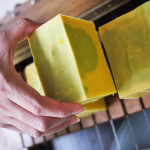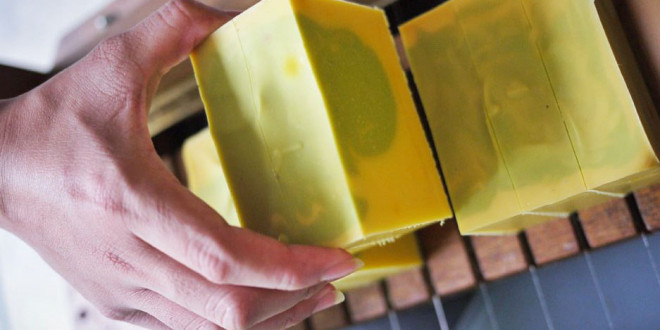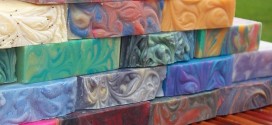Soap is much easier to make than you might think. The two main ingredients being lye and water.
It is probably easier to buy a bar from the supermarket, but making your own is:
- Safer - You control exactly what goes into it. Unlike industrially manufactured soap, there are no unnecessary chemicals that may cause irritation to skin. All natural and pure ingredients that can be manipulated to create a soap just the way you want it!
- Eco-friendly - The chemicals inside commercial soap find their way down our drains and into water-purification stations. Furthermore, some chemicals in shower gel can take up to 300 years to biodegrade. However a natural bar contains 100% biodegradable ingredients.
- Kind to animals - Homemade soap is not tested on animals.
- CHEAPER- Buying the ingredients in bulk produces a lot of soap and works out more cost effective than buying individual bars from the supermarket.
TIP - Experiment with different moulds ...the bottom of a fizzy drinks bottle makes a great flower shape! Find more inspirational soap ideas.
Simple cold-process soap recipe

Por Publicado: September 23, 2013
- Resultado: 4.5lbs soap
This is a simple recipe to make a basic soap using the cold process method. Recipe and method taken from http://teachsoap.com/2012/03/18/easy-cold-process-recipes/
Materials
- 16oz Canola oil
- 16oz Coconut oil
- 16oz Palm oil
- 6.9oz Lye (5% superfatted)
- 5.8oz Distilled water
Instructions
- Make sure you put on saftey goggles and cover up in gloves and long sleeves. The lye is extremely dangerous and can burn if the correct safety precautions are not taken.
- Add the lye to the water. You may want to do this outside, away from children, where there is plenty of ventilation. Take care to not breathe in the fumes. Leave the mixture to cool to 110f.
- Add all the oils together and melt. Allow to cool to the same temperature (or within 5 degrees) of the lye water.
- Carefully, add the lye water mixture to the oil mixture (do so in this order for safety reasons). Now you have to stir until'trace' starts to occur (if you run the spoon through it you’ll be able to see an indentation for a few seconds before it disappears). It may take up to an hour for this to occur.
- Pour the traced mixture into your moulds. After 3-5 days they can be removed but it is recommended to leave them to sit for 4-6 weeks to complete the saponification process.
 Handspire Do It Yourself!
Handspire Do It Yourself!


